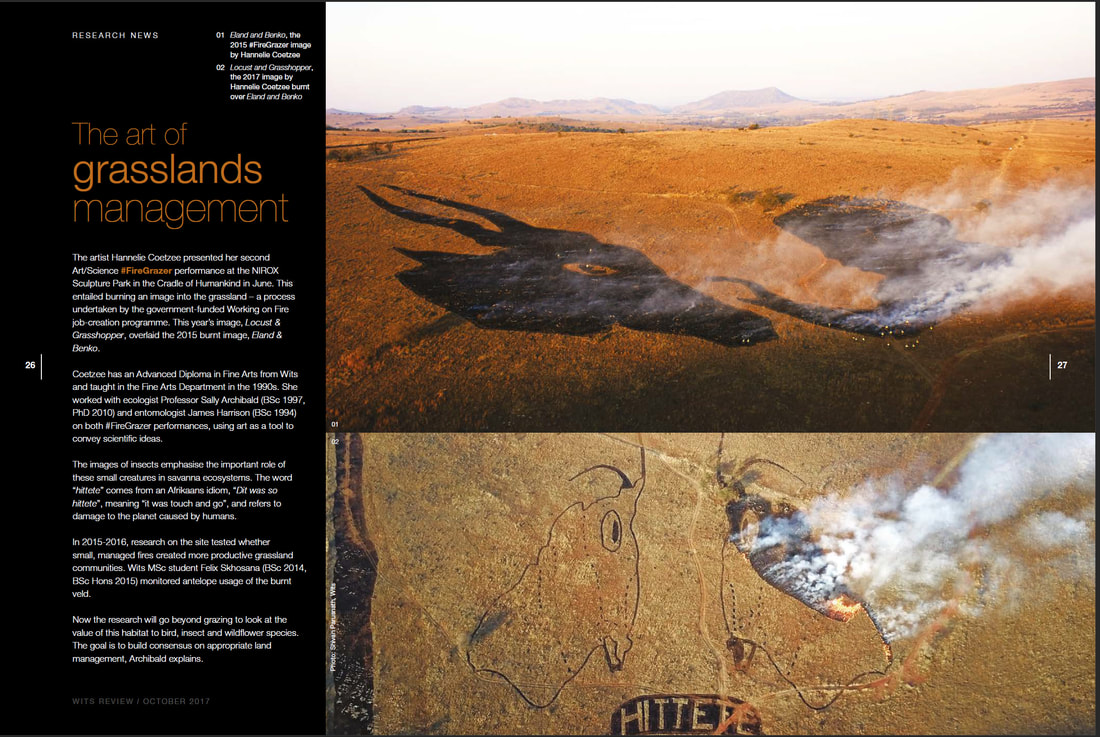ethical challenges of balancing climate -advocacy and science, LAB PI: Prof SALLY ARCHIBALD
|
|
As the world finally starts to address the problems of climate change head on, there is pressure to identify land and ocean-based activities to help reduce greenhouse gasses in the atmosphere and to ensure that socio-ecological systems can adapt. This is happening within an existing political and economic system that controls where and how investments in "Nature-Based Solutions" are financially and socially feasible. The gap between the expectations and the abilities of experts to fulfil these expectations creates a complicated environment in which to be a scientist. On the one hand, opportunities to do meaningful research abound. On the other, the intellectual freedom to explore the full implications of this research are significantly constrained. Using examples from our work on the African carbon cycle, global fire regimes, and biodiversity networks, Sally discusses some of the key tensions that have emerged and highlights how Scientists can hold themselves to account, while still engaging constructively.
|
LAb research associate selected for UNFCCC, 2022 greenhouse gas inventory review
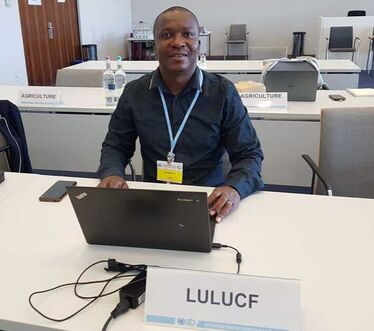
- The secretariat of the United Nations Framework Convention on Climate Change (UNFCCC) invited our Research Associate Tatenda to participate as a reviewer for the 2022 greenhouse gas (GHG) inventory submissions of Parties included in Annex I. Tatenda served as a Land use, land use change and forestry (LULUCF) expert for the centralized review of Cyprus, Greece, Lithuania, and Switzerland, held from 5-10th September 2022 in Bonn, Germany. During the review experts used:
- The Guidelines for the preparation of national communications by Parties included in Annex I to the Convention,
- Part I: UNFCCC reporting guidelines on annual greenhouse gas inventories, adopted by decision 24/CP. l 9,
- The Guidelines for the technical review of information reported under the Convention related to greenhouse gas inventories,
- Biennial reports and national communications by Parties included in Annex I to the Convention, adopted by decision 13/CP.20,
- The Intergovernmental Panel on Climate Change (IPCC) methodologies and good practice guidance,
- Other relevant COP decisions, as the bases for the technical review of inventories. This process was guided by the procedures and deadlines for each stage as set out in the guidelines, under the coordination of the UNFCCC secretariat. The review process helps to ensure that the Conference of the Parties (COP) under UNFCCC has accurate and reliable information on greenhouse gas emissions. This being the last review at the end of the Kyoto protocol, focus was on ensuring that all inventory issues that have a bearing on accounting of emissions under the Kyoto protocol are addressed.
TREE resprouting responses to charcoal harvesting in MIOMBO woodlands, zambia
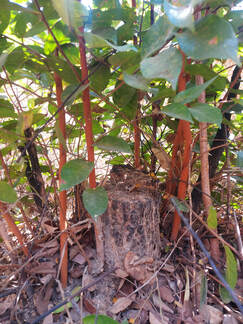
- Between July 25th – 31st, 2022 Fezile & Sally travelled to Kitwe, Zambia to visit one of our data collaborator’s (Stephen Syampngani at the Copperbelt University) Miombo sites in Mwekera and collect data. These data would feed into a growing ‘resprouting database’ contributed by multiple researchers working in savannas across the African region.
We recorded data from more than 200 individual trees comprisinng of ~30 species. Most frequently cut species in these sites include Marquesia macroura, Isoberlinia angolensis, Julbernadia paniculata, Anisophyllea boehmii and multiple Brachystegia spp. One of our questions of interest is understanding how resprouting ability varies across the different stage classes (seedling, sapling, adult etc.,) of these dominating species.
We anticipate that among other outputs, this information will help improve understanding of resprouting as a key regenerative process and can help parameterizing sustainable tree harvesting models.
effects of fire on soil & microbial activity and soil properties
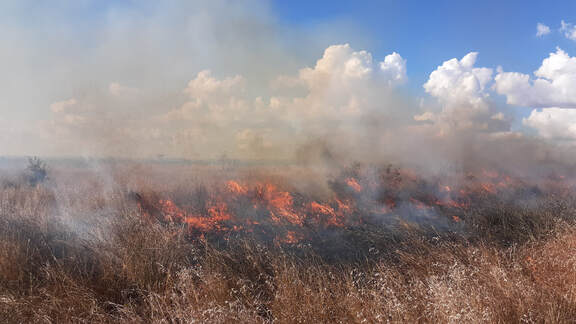
Kagiso Mogajane's honors project investigated the effects of fire on soil microbial activity and key soil chemical properties in Lower Sabie, Kruger National Park. The goal was to see if there was a difference in soil microbial activity and soil chemical composition at different treatments (fire or no fire). There were nine plots treated with fire at different intensities and four plots that had no fire treatment. They observed no significant differences in the soil microbial activity and soil chemical composition on all plots before and one week after the fire treatments. The research was supervised by Dr. Sivu Situngu and Prof. Sally Archibald.
SEOSAW-GGG Herbaceous Protocol Training Workshop
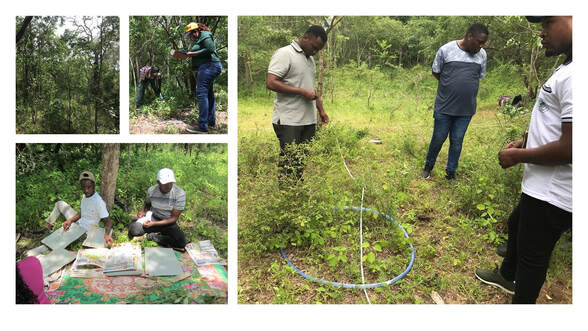
SEOSAW (Socio-ecological observatory for the study of African woodlands - seosaw.github.io), a Miombo Network activity, ran a Herbaceous Protocol Training Workshop in Morogoro, Tanzania at the Kitulangalo Forest Reserve plots,15-25 March 2022. The training covered how to sample grasses and other non-woody vegetation according to the GGG (Global Grassy Group - globalgrassygroup.github.io/) protocol. The GGG protocol is a standardised method of collecting herbaceous species composition and functional attributes. SEOSAW also trialled herbaceous biomass, and shrub protocols. These protocols have all been designed as complementary to the SEOSAW tree, regeneration, and coarse woody debris protocols for a full estimation of vegetation biodiversity and biomass on SEOSAW plots.
This field workshop was hosted by TAFORI (Tanzania Forestry Research Institute), University of the Witwatersrand (South Africa), and the University of Edinburgh (UK). SEOSAW also spent time with students from Sokoine University of Agriculture who joined us in the field to learn about herbaceous sampling methods. This training brought together early career foresters and ecologists from TAFORI (Tanzania), Dar es Salaam University (Tanzania), Forestry Training Institute-Olmotonyi (Tanzania), SAEON (South Africa), Kenya Forest Service, Forestry Commission of Zimbabwe, East African Herbarium-National Museums of Kenya, and Karatina University (Kenya) to learn new skills which they can utilize at their own PSP sites as well as fostering new and existing collaborations within and between African institutions.
This field workshop was hosted by TAFORI (Tanzania Forestry Research Institute), University of the Witwatersrand (South Africa), and the University of Edinburgh (UK). SEOSAW also spent time with students from Sokoine University of Agriculture who joined us in the field to learn about herbaceous sampling methods. This training brought together early career foresters and ecologists from TAFORI (Tanzania), Dar es Salaam University (Tanzania), Forestry Training Institute-Olmotonyi (Tanzania), SAEON (South Africa), Kenya Forest Service, Forestry Commission of Zimbabwe, East African Herbarium-National Museums of Kenya, and Karatina University (Kenya) to learn new skills which they can utilize at their own PSP sites as well as fostering new and existing collaborations within and between African institutions.
SASSCAL bird survey and data management field campaign
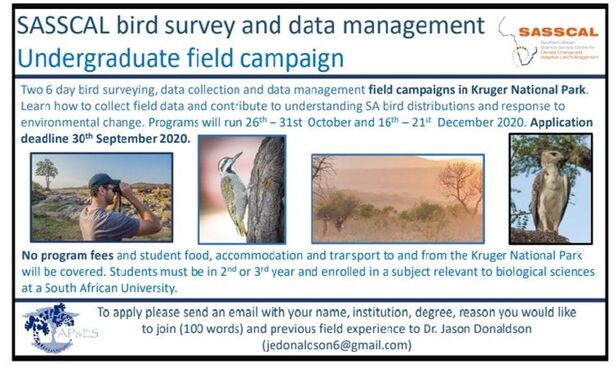
March 2021 marked the end of the 2nd SASSCAL (https://www.sasscal.org/) field campaign in Satara, Kruger National Park. We have now successfully run two field courses with 12 undergraduate students from five South African higher education institutions. Both groups of students collected data on bird community composition at experimental sites near Satara Rest Camp with the aim of divulging whether bird communities change with the formation of “grazing lawns” - areas where repeated grazing by herbivores keeps grass short.
The first field campaign took place in late October 2020 and we sampled bird communities at the termination of the dry season, while during the more recent campaign we collected data on birds present during the summer rainy season. Many bird species such as Steppe eagles, European bee-eaters and European rollers migrate from northern latitudes to spend the austral-summer in the wet and warm savannas of Kruger National Park. We therefore needed to assess the bird communities over both seasons to get a complete view of the response of birds to our grazing lawn treatments.
Students spent a few days learning field skills at the Skukuza Science Leadership Institute (http://www.nsasani.co.za/) in Kruger National Park under the tutelage of Donovan Tye (The Organization for Tropical Studies), Phillip Mhlava (South African National Parks) and Jason Donaldson (Odum School of Ecology) before daily data collection started in earnest. Birds require early mornings, and with the support of South African National Parks students were out in the field collecting data at the crack of dawn during what is known as the “dawn chorus” - when birds begin their day with a flurry of activity and calling. Using a combination of visual and audio techniques we formed teams of students and experienced birders and identified bird species at set time periods and specific experimental treatment (grazing lawn) and control (tall grass) plots. Sampling was done even during wet days when the rainy season lived up to its name and students spent afternoons entering data and learning the best practices for data management. Over 80 bird species were identified within plots over both campaigns and many more were observed recreationally at the campsite and during drives to and from field sites.
The data we collected during these surveys will feed into a larger research study at the Archibald Ecology Lab looking at the effects of grazing lawns on biodiversity and savanna system function. The field campaigns were made possible by funding from SASSCAL. We would also like to thank all the students involved in data collection and extend a huge thank you to South African National Parks and SSLI for supporting our field campaigns.
The first field campaign took place in late October 2020 and we sampled bird communities at the termination of the dry season, while during the more recent campaign we collected data on birds present during the summer rainy season. Many bird species such as Steppe eagles, European bee-eaters and European rollers migrate from northern latitudes to spend the austral-summer in the wet and warm savannas of Kruger National Park. We therefore needed to assess the bird communities over both seasons to get a complete view of the response of birds to our grazing lawn treatments.
Students spent a few days learning field skills at the Skukuza Science Leadership Institute (http://www.nsasani.co.za/) in Kruger National Park under the tutelage of Donovan Tye (The Organization for Tropical Studies), Phillip Mhlava (South African National Parks) and Jason Donaldson (Odum School of Ecology) before daily data collection started in earnest. Birds require early mornings, and with the support of South African National Parks students were out in the field collecting data at the crack of dawn during what is known as the “dawn chorus” - when birds begin their day with a flurry of activity and calling. Using a combination of visual and audio techniques we formed teams of students and experienced birders and identified bird species at set time periods and specific experimental treatment (grazing lawn) and control (tall grass) plots. Sampling was done even during wet days when the rainy season lived up to its name and students spent afternoons entering data and learning the best practices for data management. Over 80 bird species were identified within plots over both campaigns and many more were observed recreationally at the campsite and during drives to and from field sites.
The data we collected during these surveys will feed into a larger research study at the Archibald Ecology Lab looking at the effects of grazing lawns on biodiversity and savanna system function. The field campaigns were made possible by funding from SASSCAL. We would also like to thank all the students involved in data collection and extend a huge thank you to South African National Parks and SSLI for supporting our field campaigns.
Lab affiliate gareth hempson talks to enca news about his paper in science advances showing that dietary shifts in impala are as significant in driving their success as the spatial migration of wildebeest in the serengeti
|
|
Nirox fire artwork |

